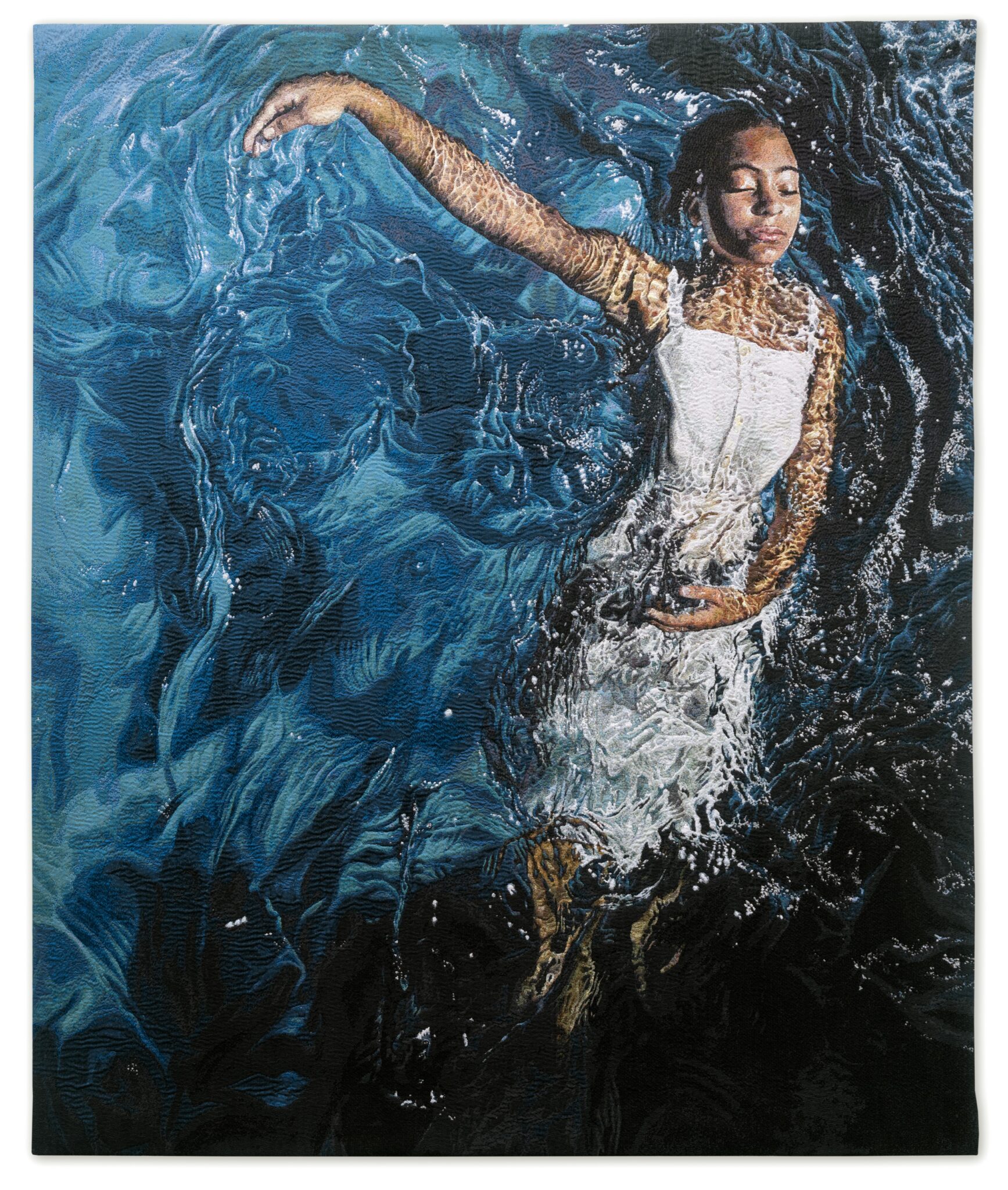I thought a lot of my father…his family is on the Maryland Eastern shore and who was so close to the beach, but they would never go because of the laws, they could only swim there on Thursdays…It kind of kept it away. And they were so close to the beach, but they wouldn’t step on it and see the water. It’s so beautiful…water is a natural resource that we should all have access to. I think of that as a backdrop when I put figures in it…our history is constantly with us, it doesn’t go away. – Calida Rawles
Calida Rawles was born in Wilmington, DE, and lives in Los Angeles, where she creates hyper-realistic figurative paintings addressing identity, race, and social politics. When Rawles conceptualized her series of spiritually ethereal images of black figures floating in clear blue ripples, she thought of the troubled history black people have experienced with water. Rawles finds swimming “free and relaxing,” as Our Grace deeply demonstrates with the young woman floating effortlessly in the ripples and refracted light. Her arms appear in a ballerina-like pose; the water seems to lift her from the deep blue depths of history and into the light. Rawles first entered the public eye in 2019, when her painting graced the cover of Ta-Nehisi Coates’ novel, The Water Dancer. Rawles’ work can be found in public and private collections worldwide, including the Dallas Museum of Art; Los Angeles County Museum of Art; Perez Art Museum, Miami; and The Studio Museum of Harlem, and her work was included in the 12th Berlin Biennale, Berlin, Germany. Most recently, Rawles completed her first large-scale public art installation, The Way of Time, now on display at the Sofi Stadium promenade in Inglewood.
